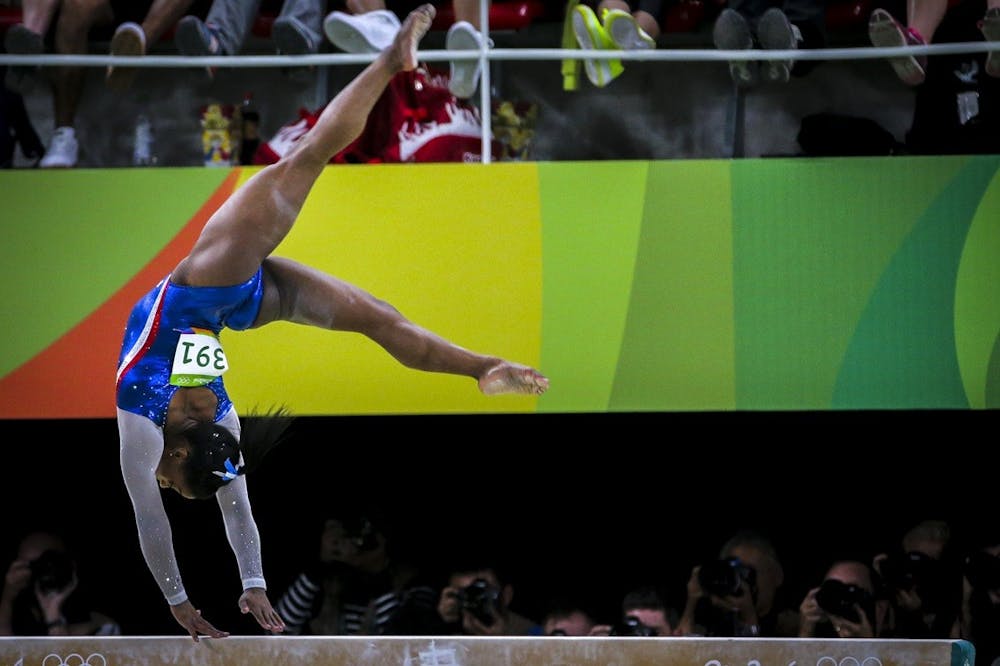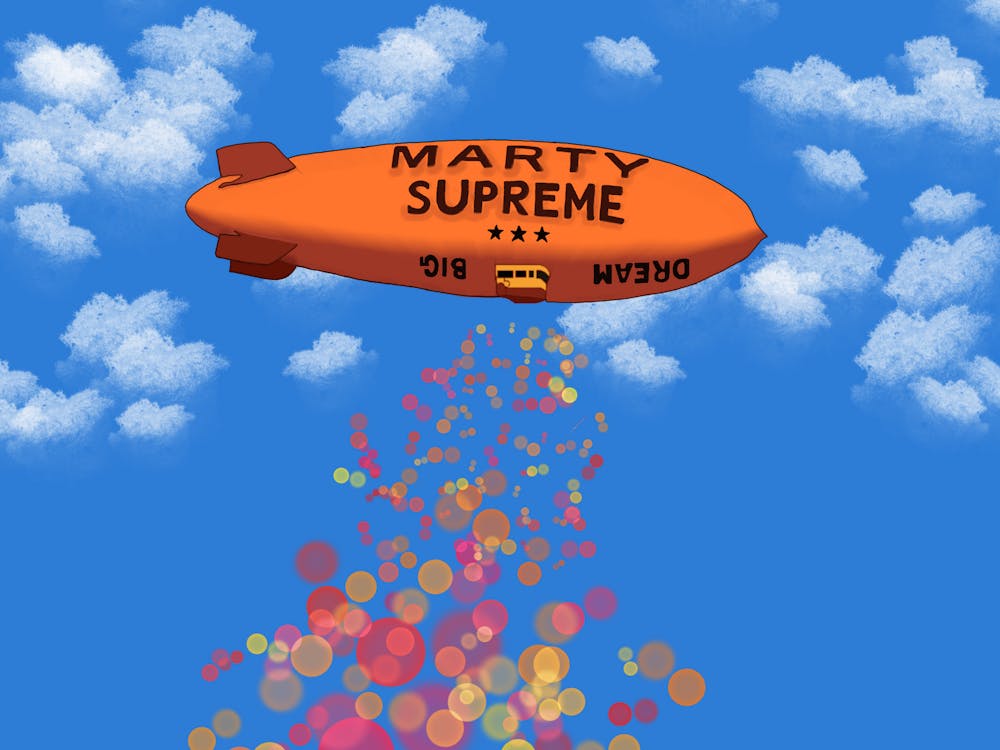It has been four years since the shocking sexual-abuse scandal involving the USA Gymnastics women’s team doctor Larry Nassar surfaced — exposing his extreme misconduct and misuse of power to manipulate young athletes during his 29-year career. This past summer, “Athlete A” was released on Netflix, which details the whirlwind of events that followed. Bonni Cohen and Jon Shenk — the brilliant minds behind the film — construct a compelling and chilling documentary that empowers survivors while confronting the perpetrators who allowed the abuse to fester. Cohen and Shenk craftily weave numerous storylines within the one hour and 44 minutes of the film, exploring the importance of investigative journalism, USAG’s toxic culture and, most importantly, the stories of the survivors. At the Virginia Film Festival, the directors engaged in a conversation with U.Va. Women and Gender Studies Prof. Bonnie Hagerman to talk through their process of creating the film.
During the talk, Shenk noted the reasoning behind using elite gymnast Maggie Nichols as the anchor of the film — the two directors began their work in 2017 after the Indianapolis Star reporters discovered USA Gymnastics had been aware of the Nassar scandal long before the news broke to the public. Nichols was the first to report directly to USAG in the summer of 2015 after being sexually abused while training with the national team in pursuit of the 2016 Olympics. She was coined as ‘Athlete A’ in the reports that followed, and — being the “early whistleblower,” as Shenk noted — it was natural to follow this thread.
Along with Nichols, “Athlete A” also highlights the stories of Rachel Denhollander, Jessica Howard and Jamie Dantzcher. After the Indianapolis Star released an article covering the misconduct of coaches sexually abusing their athletes with protection under USAG, these women came forward and encouraged the newspaper to look into Nassar. All living in different parts of the country with no relation to the other, the three women told the same story about the same man.
A “relay race” is the metaphor used by the filmmakers to depict the way this story unfolded, which helped to organize the film. The brave whistleblowers’ — Denhollander, Howard and Dantzcher — work with the investigative reporters at the Indianapolis Star was similar to “passing the baton,” Shenk said, and they were eventually deep into the race of this story. Cohen built upon the relay race analogy to emphasize the significance of the combined effort between the survivors and journalists.
“If one of the pieces did not come together, Larry Nassar may not have been put behind bars,” Cohen said.
The Indianapolis Star reporting is reminiscent of the investigative work done by the Boston Globe in 2002 regarding the sexual abuse scandal involving the Catholic clergy. Hagerman mentioned this connection to elicit a discussion on the importance of media in garnering mass attention.
“It is important to note we have tremendous reliance on great investigative reporting,” Cohen said. “The journalists and these survivors rely on each other to amplify the truth.” She emphasized that journalism is underfunded and undervalued in this country, so it was a goal to “trumpet that work as the real strength behind how these stories got out into the public.”
Nassar committed horrific crimes against numerous girls and young women and was not alone in doing so. USAG covered up for Nassar to protect themselves. The film works to illuminate the paradigm shifts in gymnastics which triggered this system of injustice. Under the coaching of Bera Koryali, it became “a little girls’ sport with little boys’ bodies,” Cohen said.
“There was a suppression of menstruation and growth into womanhood,” Cohen said — the source of the immense psychological and physical abuse that became the “mainstay of USA Gymnastics going into the decades that followed.”
Moreover, the commodification of these athletes resulted in medals and money being valued “more than the safety and health of the young women and girls,” Cohen added. USAG, particularly under the supervision of Steve Penny, maintained the wholesome images corporations wanted by burying any complaints or scandals. This culture built on putting monetary success before human beings enabled Nassar to get away with his disgusting acts, unchecked for decades.
“Athlete A” divulges the cruelty hidden by USAG over the past 50 years, exposing Nassar and tackling the system at large. However, Cohen and Shenk ensure this story is not one of loss, but of empowerment for survivors. The film documents the strength of the many women who spoke against Nassar at his trial, which sentenced him to a life in prison.
The film concludes with the emotional “redemption for the Nichols family through Nichols’ new career as a college gymnast” Shenk said. Nichols gets the recognition she deserves as the most decorated college gymnast while competing for the University of Oklahoma. This is “sweet justice” for Nichols, Shenk said, recognizing that “Maggie becomes a majorly successful athlete with a coaching system that actually does put the priority of the athletes first and celebrates their individuality.”
To learn more about “Athlete A” and find more resources, visit their website: https://athleteafilm.com/







